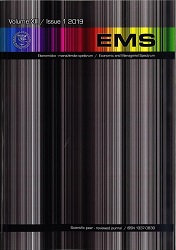CHINA – GLOBALIZATION-WORLD EMPIRICAL ANALYSIS OF CONNECTIONS
CHINA – GLOBALIZATION-WORLD EMPIRICAL ANALYSIS OF CONNECTIONS
Author(s): Monika Hadaś-DyduchSubject(s): National Economy, International relations/trade, Economic development, Globalization
Published by: Žilinska univerzita v Žiline, Fakulta prevádzky a ekonomiky dopravy a spojov, Katedra ekonomiky
Keywords: globalization; integration; similarity; DTW; wavelet;
Summary/Abstract: The aim of this paper is to analyze globalization in China in the context of comparative analysis with other countries. The analysis is based on the globalization index, which combines in one number: actual economic flows, economic restrictions, data on information flows, data on personal contact and data on cultural proximity. Trend analysis and long and short period dependencies in globalization are based on the DTW algorithm and wavelet analysis. A discrete wavelet was used for wavelet analysis of the time series studied. In the process of discrete wavelet transformation, the received signal is divided into so-called approximation and detail. The approximation is then subjected to a subsequent division into further approximation and detail, while details are not subject to further divisions. In this way, the signal is presented as the sum of the approximation of the last level and the details from all levels. The study was conducted on a group of 146 countries. In the article, globalization is understood as a process of interaction and integration among the people, companies, and governments of different nations, a process driven by international trade and investment and aided by information technology. This process has effects on the environment, culture, political systems, economic development and prosperity, and human physical well-being in societies around the world.
Journal: Ekonomicko-manazerske spektrum
- Issue Year: 13/2019
- Issue No: 2
- Page Range: 81-88
- Page Count: 8
- Language: English

